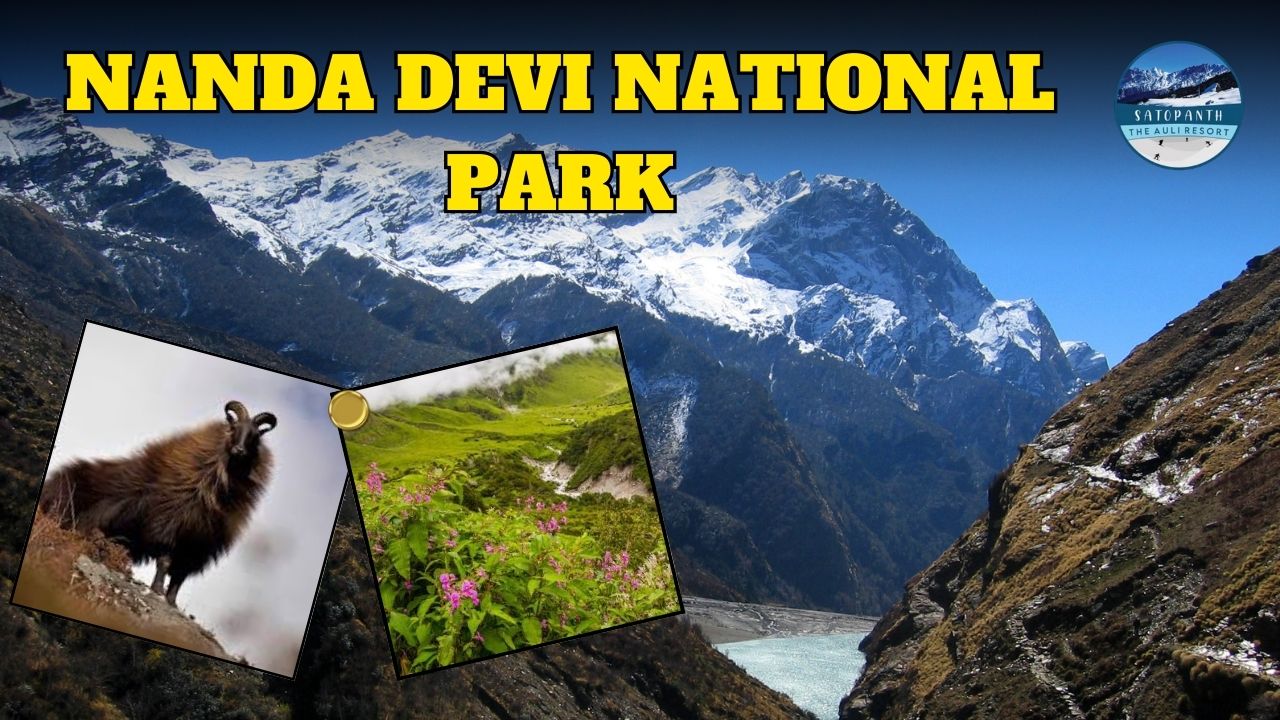

“The earth has music for those who listen,” goes the saying, but in Nanda Devi National Park, it’s nature that performs the most captivating symphony. Nestled in the heart of the Indian Himalayas, this park offers an unparalleled blend of stunning landscapes, rich biodiversity, and a glimpse into nature’s raw beauty. While many might not realize it, Nanda Devi National Park is more than just a beautiful destination—it’s a UNESCO World Heritage Site, recognized for its unique ecosystem and extraordinary conservation efforts.
Located in the state of Uttarakhand, Nanda Devi National Park has earned its title as a UNESCO World Heritage Site due to its remarkable biodiversity and stunning natural beauty. The park sits around the towering Nanda Devi Peak, India’s second-highest mountain, which stands proudly at 7,817 meters. You can’t help but feel humbled by the sheer scale and beauty of the place.
But it’s not just the scenery that makes Nanda Devi National Park so special. It’s home to some of the rarest species of flora and fauna in the world, many of which can’t be found anywhere else. Plus, the park’s remote location has helped preserve its untouched wilderness, making it one of the most pristine areas in the entire Himalayan range.
Biodiversity is the crown jewel of Nanda Devi National Park. The park supports a wide range of habitats due to its varied terrain—everything from high-altitude meadows to deep valleys and forests.
Imagine standing at the foot of Nanda Devi Peak, staring up at the snow-capped giant towering over everything. The landscape of Nanda Devi National Park feels almost otherworldly, with its glaciers, rugged mountains, and lush meadows stretching as far as the eye can see.
If you’re an adventurer at heart, Nanda Devi National Park won’t disappoint. The park offers a variety of trekking opportunities that cater to both beginners and experienced trekkers.
When’s the best time to visit Nanda Devi National Park? Well, it all depends on what you’re looking for. If you want to see the park in full bloom, plan your visit between May and October. During these months, the weather is relatively mild, and the meadows are alive with flowers and greenery.
Visitors to Nanda Devi National Park will find that accommodation options are fairly limited, but that’s part of the park’s charm. Most travelers stay in nearby towns like Joshimath, where you’ll find basic hotels, guesthouses, and even a few eco-lodges. Camping is another great option for those looking for an authentic experience—just make sure to check local regulations.
The delicate balance of Nanda Devi National Park means conservation is a top priority. However, it’s not without its challenges. Human activity, climate change, and poaching all pose significant threats to the park’s biodiversity. The government, along with international organizations, has taken steps to mitigate these risks by imposing strict regulations on tourism and promoting awareness among locals and visitors alike.
Conservation isn’t just about preserving the park for today’s visitors—it’s about ensuring that future generations can enjoy the same natural beauty we see today.
Nanda Devi National Park is more than just a travel destination—it’s a living testament to the beauty and fragility of nature. From its towering peaks and rare wildlife to its delicate meadows and glistening glaciers, the park offers an experience like no other. Whether you’re an adventurer, a nature lover, or simply someone looking to disconnect from the noise of everyday life, Nanda Devi National Park has something to offer everyone.
So, what are you waiting for? Pack your bags, grab your trekking gear, and set off on an unforgettable journey into one of the world’s most stunning natural landscapes.
You may also like :-
If you’re up for an adventure, you can’t miss the Rishi Ganga gorge trek. It offers jaw-dropping views of Nanda Devi Peak and the surrounding valleys. For experienced trekkers, this is a dream, but beginners can also find easier routes that still capture the park’s raw beauty.
The best time to visit is between May and October when the park is at its most vibrant. The weather’s more forgiving, and the meadows are lush with colorful blooms. Just remember, no matter when you go, the views are always breathtaking.
Camping in the park is allowed, but it’s regulated. Since it’s such a delicate environment, there are strict rules about where you can set up camp. If you’re not sure, ask local guides or authorities to point you in the right direction.
Mountain weather can be unpredictable, so always pack layers. Sturdy hiking boots, a waterproof jacket, and plenty of snacks are essentials. And don’t forget your camera—you’ll definitely want to capture the beauty around you!
Conserving the park’s fragile ecosystem is tough due to threats like climate change, poaching, and the impact of tourism. Thankfully, efforts are in place to combat these challenges. Strict tourism guidelines and ongoing conservation projects are helping protect this natural wonder for future generations.
The nearest airport is in Dehradun, and from there, you’ll need to drive to Joshimath. The drive is long but absolutely scenic—expect winding mountain roads and jaw-dropping views at every turn. From Joshimath, it’s a trek to the park’s entry points.
Phone: +91 8937035480, 8755918766
Email: auliresort81@gmail.com
Address: Auli Near TV Tower Sunil Joshimath 246443
Copyright © 2024 The Auli Resort. All Rights Reserved.